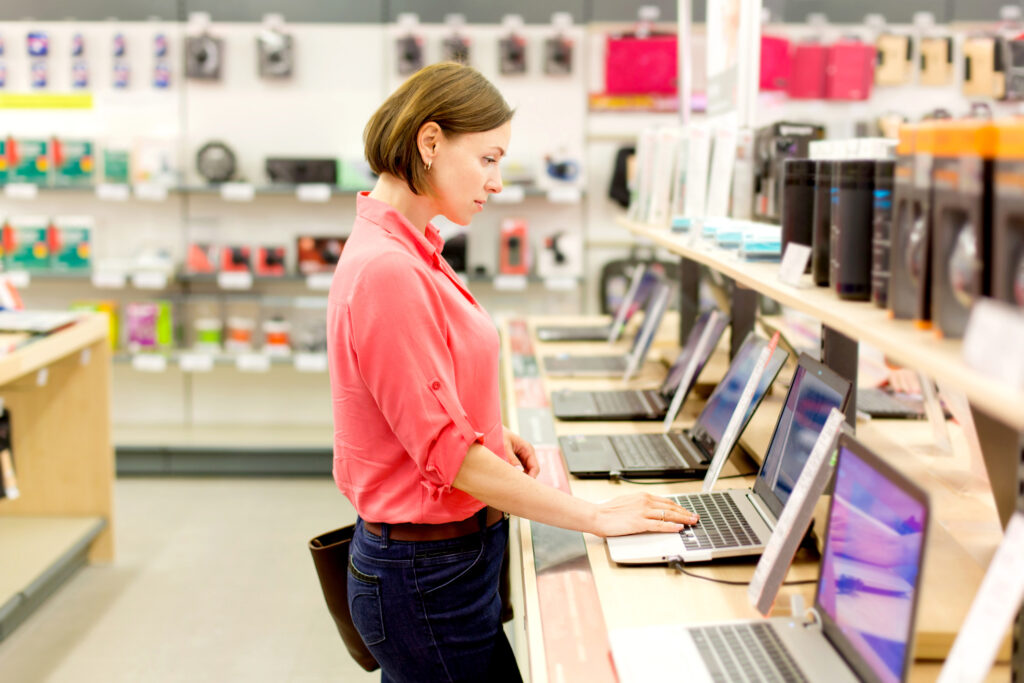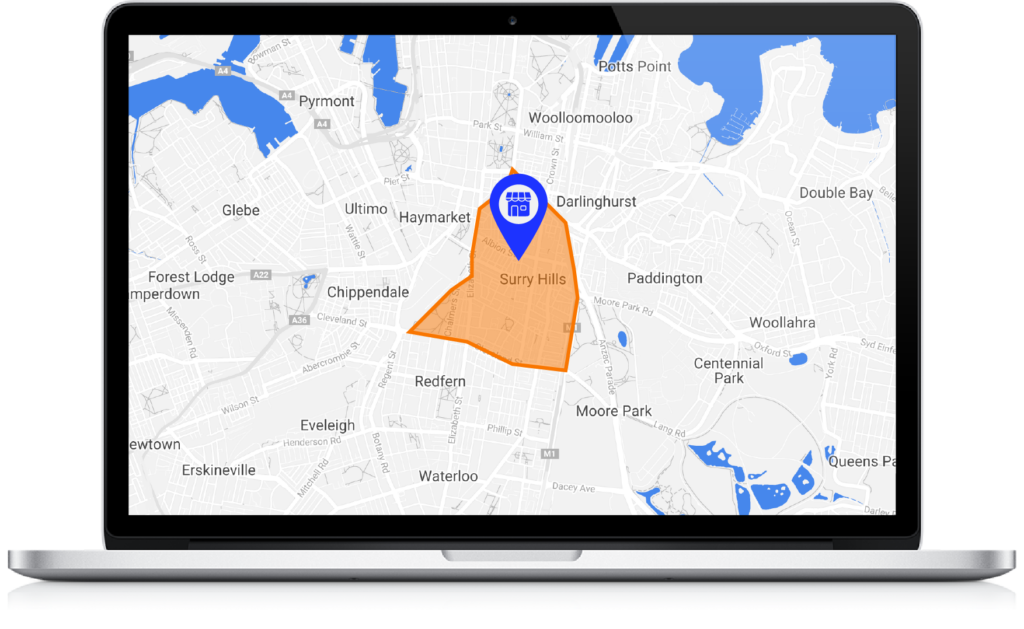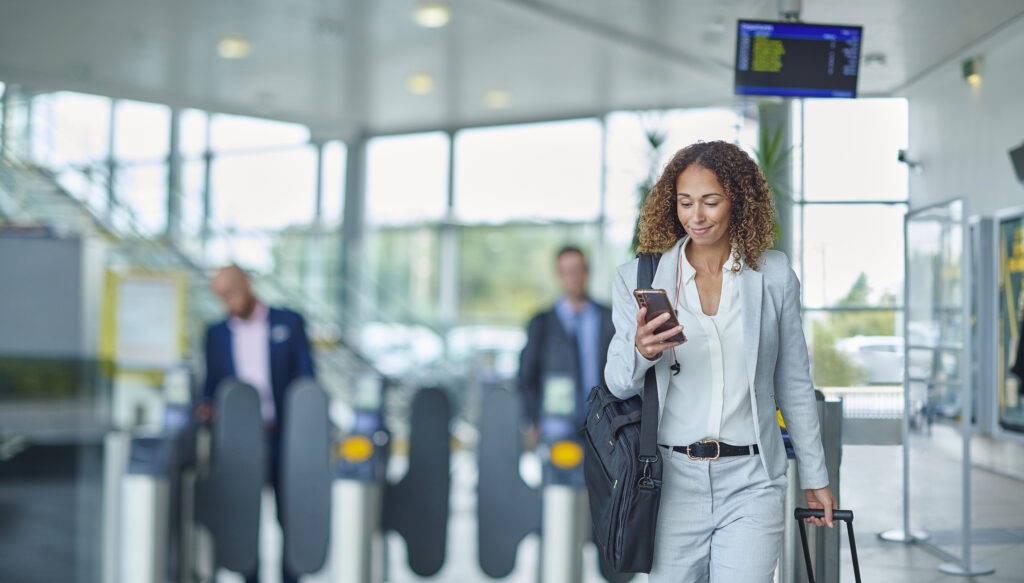
In the ever-evolving landscape of digital marketing, the advent of smartphones and the subsequent shift in consumer behavior have paved the way for innovative strategies. One such strategy that has garnered attention is geofencing marketing. This location-based approach utilises GPS or RFID (Radio Frequency Identification) technology to deliver targeted messages and advertisements to smartphone users based on their geographic location.
What is Geofencing Marketing?
Geofencing marketing is a dynamic technique that leverages technologies like GPS or RFID to establish virtual boundaries, known as geofences, around specific geographic locations. When a user’s device enters or exits these predefined boundaries, it triggers the delivery of tailored messages or advertisements, typically through SMS or push notifications.
How Does Geofencing Work?
The mechanics behind geofencing involve the creation of a digital perimeter around a particular geographic area. When a device crosses this boundary, real-time location information is utilised to initiate a digital event, such as an SMS message or a push notification. This allows businesses to engage with their audience at specific locations and moments.
The Evolution of Geofencing:
Geofencing has evolved beyond its initial applications, incorporating advanced features to enhance marketing strategies. These include hyper-personalisation, real-time analytics, integration with emerging technologies, and a focus on compliance with privacy standards.
Hyper-Personalisation and Targeting:
Modern geofencing goes beyond mere location-based targeting. It embraces hyper-personalisation by tailoring messages and offers based on individual preferences and behaviors. This approach ensures that marketing efforts are not just location-specific but also highly relevant to the recipient.
Example: A retail store using geofencing to offer personalised discounts based on a customer’s past purchase history, preferences, and current location.
Enhanced Analytics and Reporting:
Geofencing’s integration with advanced analytics tools allows marketers to gain real-time insights into campaign effectiveness, user interactions, and foot traffic. This data-driven approach empowers businesses to refine their strategies and maximise return on investment.
Example: A restaurant using geofencing analytics to understand peak hours, popular menu items, and customer behavior to optimise staffing and promotional efforts.
Integration with Emerging Technologies:
Geofencing is no longer confined to its original boundaries. Its integration with emerging technologies, such as augmented reality and the IoT (Internet of Things), opens up new possibilities for creative and interactive marketing campaigns.
Example: An art gallery using geofencing and augmented reality to provide interactive information about exhibited artworks to visitors.
Compliance and Privacy Considerations:
With the increasing emphasis on privacy, geofencing strategies must align with regulatory standards. Ensuring compliance with privacy considerations becomes paramount in crafting effective and responsible geofencing campaigns.
Example: An event organiser using geofencing with explicit opt-in mechanisms to inform attendees about schedule changes and exclusive offers.

Real-Life Examples of Geofencing Success:
Numerous businesses worldwide have harnessed the power of geofencing marketing with remarkable success. From major retailers to transportation services, the versatility of geofencing is evident in its ability to drive customer engagement, increase foot traffic, and generate measurable results.
Westfield Shopping Centers: Targeted Retail Promotions
Objective: Drive foot traffic to Westfield shopping centers and promote retail sales.
Strategy: Westfield implemented geofencing around several of its shopping centers in Australia. Visitors entering the geofenced areas received targeted promotions and discounts for stores within the shopping centers through the Westfield mobile app.
Results: The campaign resulted in increased foot traffic to the stores, higher engagement with the Westfield app, and a positive impact on retail sales.
Qantas: Airport Advertising
Objective: Enhance user engagement and promote services to travelers.
Strategy: Qantas leveraged geofencing at major airports across Australia to engage with travelers. Users entering or exiting the airport perimeter received notifications about flight updates, exclusive lounge access offers, and promotions for Qantas services.
Results: The geofencing strategy increased brand engagement among travelers, promoting additional services and creating a more personalised experience for Qantas customers.
How to Best Utilise Geofencing:
Optimising geofencing campaigns involves strategic planning and execution. From defining precise geofences to crafting compelling ads and measuring key metrics, here are essential tips for businesses looking to make the most of their geofencing efforts.
Define (and Refine) the Right Geofence:
The effectiveness of a geofencing campaign hinges on accurately defining the geographic area of interest. Testing and refining geofences based on real-time data and audience behavior contribute to campaign success.
Example: An outdoor event using geofencing to target nearby neighborhoods, refining the geofence based on attendance patterns and audience engagement.
Identify a Compelling Offer:
A successful geofencing campaign often includes enticing offers to attract and engage the target audience. These could range from discounts and promotions to exclusive deals that drive user action.
Example: A cafe using geofencing to offer a limited-time discount to users passing by during off-peak hours, increasing customer visits.

Craft an Effective Ad or Message:
Geofencing ads should be concise, attention-grabbing, and include a clear call to action. Incorporating elements like urgency and a strong value proposition can enhance the impact of geofencing messages.
Example: A gym using geofencing to send a personalised workout plan to users near their location, encouraging them to join and avail a special membership offer.
Measure Geofencing Results:
Regularly measuring key metrics, including impressions, clicks, website visits, calls, and walk-ins, provides valuable insights into the success of a geofencing campaign. This data-driven approach enables marketers to optimise strategies for better outcomes.
Example: A car dealership using geofencing metrics to track showroom visits resulting from targeted promotions, adjusting campaigns based on conversion data.
Always Be Testing:
A/B testing different variations of geofencing campaigns helps identify the most effective messaging, offers, and creative elements. Continuous testing allows businesses to refine their approach and maximise the impact of their geofencing efforts.
Example: A tech store using A/B testing to compare the effectiveness of different geofencing messages in driving online and in-store purchases.

Run Geofencing as Part of Your Display Advertising Strategy:
Integrating geofencing into the broader display advertising strategy ensures a comprehensive approach that targets consumers on both mobile devices and desktop browsers.
Example: An e-commerce platform using geofencing in conjunction with display ads to reach users on various devices, maximising brand visibility and conversions.
Conclusion:
Geofencing marketing stands as a dynamic and versatile strategy in the marketer’s toolkit. By exploring the limitless possibilities of geofencing, businesses can engage their audience in a non-intrusive yet highly targeted manner. Embracing the educational aspect of geofencing empowers marketers to leverage its capabilities effectively, fostering a deeper understanding of this innovative location-based marketing strategy.




